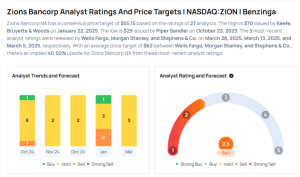The diesel futures market has been trading in a fairly tight range, and it is showing up in relative stability at the pump.
The weekly average retail diesel price published Monday by the Department of Energy/Energy Information Administration, used for most fuel surcharges, rose 0.5 cents per gallon to $3.665. That follows an increase last week of 0.1 cents a gallon. One-tenth of a cent is the smallest increment the price can move each week.
In the past 10 trading days, the price of ultra low sulfur diesel on CME is down just nine-tenths of 1 cent. The moves in that time have been relatively minor. Not surprisingly, retail prices are concurrently showing stability, and that’s reflected in the two latest small moves in the DOE/EIA price.
The retail diesel benchmark remains significantly above a recent low of $3.458 a gallon published on Dec. 9.
Most of the increase since then occurred in the first weeks of January as oil prices overall rose sharply on the back of a new package of sanctions imposed against the shipping of Russian oil by the outgoing Biden administration. It pushed the DOE/EIA diesel price as high as $3.715 a gallon published Jan. 20, coincidentally the day that Donald Trump took office.
The DOE/EIA price fell 5.6 cents a gallon the following week before the small upward moves the past two weeks.
But the higher prices of ultra low sulfur diesel on the CME commodity exchange mostly came in January. A decline followed and in the past two weeks, price swings have been muted.
On Jan. 27, two weeks prior to Monday, ULSD on CME settled at $2.46 a gallon. On Monday, ULSD settled at $2.4509, just .0091 cents per gallon less than two weeks ago.
In the interim, the moves have been fairly restrained. The low settlement during that period was $2.3942 a gallon last Wednesday. The high settlement was $2.4845 a gallon on Jan. 30.
The end result has been the stable pump prices reflected in the small moves the past two weeks in the DOE/EIA price.
Those tighter shipping sanctions imposed by the Biden administration appear to be having an impact on Russian output.
A report by Bloomberg published Monday, quoting “people familiar with the figures,” said Russia’s output declined in January to 8.962 million barrels a day. That is 16,000 barrels per day less than the country’s quote under the OPEC+ agreement that is restricting output from both OPEC nations and a group of non-OPEC oil exporters led by Russia. It is also slightly less than the 8.97 million barrels a day produced in December, according to the monthly report of S&P Global Commodity Insights.

